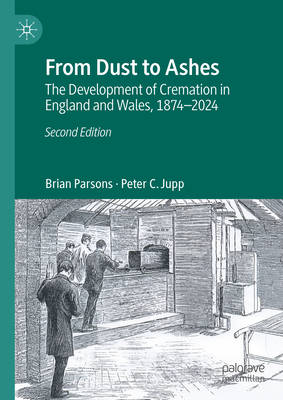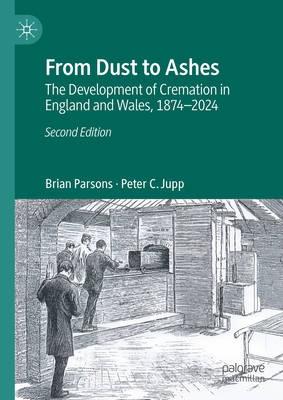
- Afhalen na 1 uur in een winkel met voorraad
- Gratis thuislevering in België vanaf € 30
- Ruim aanbod met 7 miljoen producten
- Afhalen na 1 uur in een winkel met voorraad
- Gratis thuislevering in België vanaf € 30
- Ruim aanbod met 7 miljoen producten
Zoeken
From Dust to Ashes
The Development of Cremation in England and Wales, 1874-2024
Brian Parsons, Peter C Jupp
Hardcover | Engels
€ 244,45
+ 488 punten
Omschrijving
The second edition of From Dust to Ashes brings up-to-date this classic text investigating the replacement of burial by cremation in England and Wales. Cremation was promoted seriously in 1874 but the first cremation did not take place until eleven years later. The response by the public was cautious. Despite the provision of crematoria, by 1939, less than 4 percent of deaths were followed by cremation. The Second World War and the immediate post-war welfare state period brought drastic change to the extent that by 1967 the number of cremations first exceeded burials. Today, the proportion is just over 80 per cent. The final chapter addresses the enormous changes in the last twenty-five years in the disposal of our dead This book discusses the activities of the Cremation Society, the establishment of early crematoria, and the promotion of cremation against the background of social and economic change before outlining the reasons why bereaved families chose to accept it and, finally, the social, economic and religious pressures that facilitated its adoption. The book will therefore be of use to scholars of death studies, anthropology, sociology, health and medicine and church history, as well as members of the funeral professions.
Specificaties
Betrokkenen
- Auteur(s):
- Uitgeverij:
Inhoud
- Aantal bladzijden:
- 399
- Taal:
- Engels
Eigenschappen
- Productcode (EAN):
- 9783031884108
- Verschijningsdatum:
- 28/12/2025
- Uitvoering:
- Hardcover
- Formaat:
- Genaaid
- Afmetingen:
- 148 mm x 210 mm

Alleen bij Standaard Boekhandel
+ 488 punten op je klantenkaart van Standaard Boekhandel
Beoordelingen
We publiceren alleen reviews die voldoen aan de voorwaarden voor reviews. Bekijk onze voorwaarden voor reviews.








